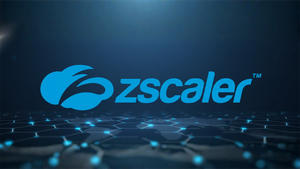
Electric vehicle manufacturer Rivian (NASDAQ: RIVN) reported revenue ahead of Wall Street’s expectations in Q2 CY2025, with sales up 12.5% year on year to $1.30 billion. Its non-GAAP loss of $0.80 per share was 25.4% below analysts’ consensus estimates.
Is now the time to buy RIVN? Find out in our full research report (it’s free).
Rivian (RIVN) Q2 CY2025 Highlights:
- Revenue: $1.30 billion vs analyst estimates of $1.28 billion (12.5% year-on-year growth, 2% beat)
- Adjusted EPS: -$0.80 vs analyst expectations of -$0.64 (25.4% miss)
- Adjusted EBITDA: -$667 million vs analyst estimates of -$513.5 million (-51.2% margin, 29.9% miss)
- EBITDA guidance for the full year is -$2.13 billion at the midpoint, below analyst estimates of -$1.84 billion
- Operating Margin: -85.5%, up from -114% in the same quarter last year
- Sales Volumes fell 22.7% year on year (9.1% in the same quarter last year)
- Market Capitalization: $14.52 billion
StockStory’s Take
Rivian’s second quarter was marked by a negative market reaction, reflecting investor concerns about profitability despite modest revenue growth. Management attributed the performance to lower production volumes caused by supply chain issues and shifts in trade policy, which led to weaker fixed cost absorption and higher unit costs. CFO Claire McDonough highlighted that, “the largest driver…was driven by the lower production volume and therefore, the lack of fixed cost leverage,” while CEO RJ Scaringe emphasized ongoing cost reductions and strong uptake for recently launched products such as the R1 Quad-Motor. The company’s software and services segment performed well, supported by its joint venture with Volkswagen Group and increasing contributions from remarketing and charging operations.
Looking ahead, Rivian’s guidance is shaped by mounting policy headwinds, including increased tariffs and changes to regulatory credit programs. Management is focused on launching the R2 platform, which they believe will deliver a significantly lower cost structure and broaden the addressable market. Scaringe expressed confidence that, “R2 is a core focus for our team and a critical step to achieving our objective of delivering millions of vehicles per year.” However, McDonough cautioned that the loss of regulatory credits and higher tariffs will weigh on gross profit and EBITDA, prompting efforts to mitigate these effects through further cost optimization and new revenue streams from software, services, and potential licensing deals.
Key Insights from Management’s Remarks
Management attributed the quarter’s results to supply chain disruptions, ongoing investments in R2 development, and new policy challenges such as tariffs and regulatory credits.
- Supply chain challenges: The company faced lower production volumes due to component shortages, partially driven by evolving trade policy. This led to higher per-unit costs and underutilized capacity in Rivian’s Illinois facility, pressuring margins in the automotive segment.
- R2 development on track: Rivian completed key design validation builds for the upcoming R2 vehicle, citing successful supplier negotiations that have halved its bill of materials cost compared to R1. Management stressed that the R2 platform is expected to achieve significantly improved manufacturing efficiencies and cost structures.
- Autonomy and AI investment: Rivian continued to invest heavily in its autonomy platform, launching enhanced highway assist features and preparing for a dedicated autonomy and AI event later this year. The company’s large-scale data collection and AI model training are seen as strategic differentiators for future product offerings.
- Software and services momentum: The software and services segment, including the Volkswagen joint venture, delivered strong gross profit contributions. Additional growth was seen from remarketing, charging, and accessories, with expectations for this segment to play a larger role in profitability over time.
- Capital and balance sheet actions: Rivian secured a $1 billion equity investment from Volkswagen Group and refinanced its debt, bolstering its liquidity. Management highlighted access to additional financing, including a $6.6 billion loan from the Department of Energy, to support expansion and R2 production.
Drivers of Future Performance
Rivian’s outlook for the next year hinges on the successful ramp of R2, managing policy headwinds, and growing contributions from software and services.
- R2 launch and cost structure: Management believes the R2 platform’s lower bill of materials and improved manufacturability are crucial for reaching positive gross margins and broadening Rivian’s market appeal, especially as incentives for electric vehicles decline. The company expects R2 to benefit from established supplier contracts and production synergies with the existing Illinois plant, potentially accelerating the path to profitability.
- Tariffs and regulatory credits: Increased tariffs and changes in regulatory credit programs are expected to reduce gross profit and EBITDA for the remainder of this year and into 2026. Management is actively studying mitigation strategies, including joint sourcing and regional production adjustments, to offset these headwinds. The company does not expect revenue from certain regulatory credit programs for the remainder of this year.
- Software and services expansion: Rivian expects its software and services business—including licensing, remarketing, charging, and the Volkswagen joint venture—to become a more material contributor to profitability. Management sees further opportunities in autonomy technology and partnerships with other automakers, which could help offset the loss of regulatory credits and drive EBITDA improvement by 2027.
Catalysts in Upcoming Quarters
In upcoming quarters, the StockStory team will closely monitor (1) the progress and timeline of R2’s manufacturing validation and supplier ramp, (2) Rivian’s ability to manage higher input costs from tariffs and policy changes while preserving gross margin, and (3) the scaling of its software and services business, especially the Volkswagen joint venture and expansion of the charging and remarketing platforms. The effectiveness of cost optimization measures and developments in autonomy features will also be key indicators of execution.
Rivian currently trades at $11.93, down from $12.18 just before the earnings. Is the company at an inflection point that warrants a buy or sell? See for yourself in our full research report (it’s free).
Our Favorite Stocks Right Now
Donald Trump’s April 2025 "Liberation Day" tariffs sent markets into a tailspin, but stocks have since rebounded strongly, proving that knee-jerk reactions often create the best buying opportunities.
The smart money is already positioning for the next leg up. Don’t miss out on the recovery - check out our Top 6 Stocks for this week. This is a curated list of our High Quality stocks that have generated a market-beating return of 183% over the last five years (as of March 31st 2025).
Stocks that made our list in 2020 include now familiar names such as Nvidia (+1,545% between March 2020 and March 2025) as well as under-the-radar businesses like the once-micro-cap company Kadant (+351% five-year return). Find your next big winner with StockStory today.
StockStory is growing and hiring equity analyst and marketing roles. Are you a 0 to 1 builder passionate about the markets and AI? See the open roles here.





